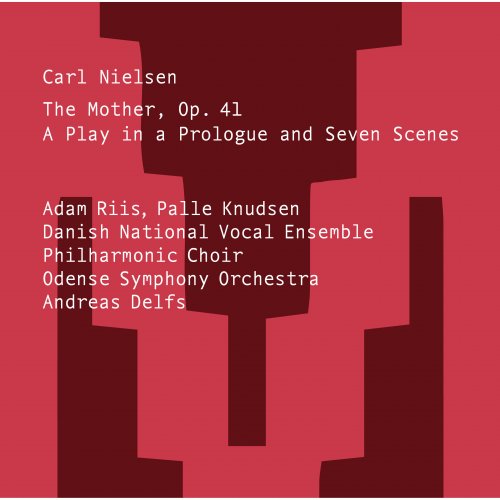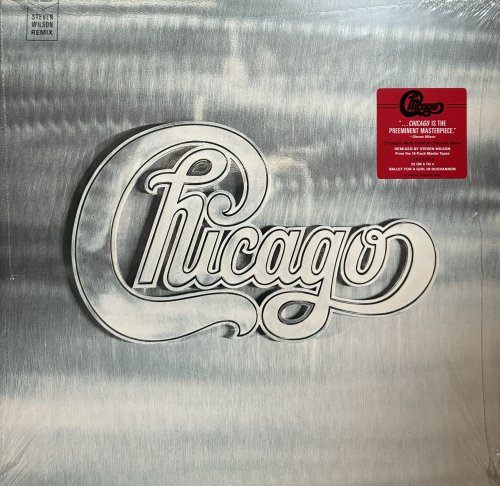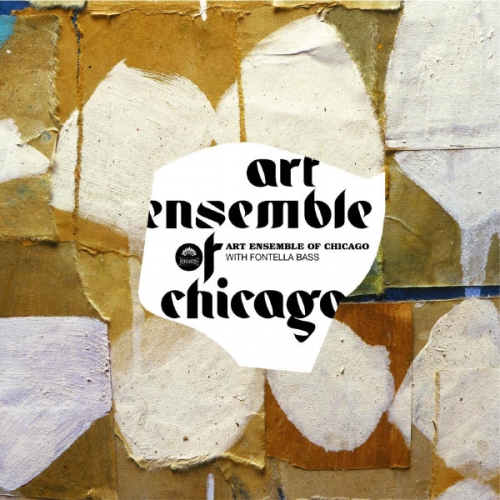VA - Nielsen: The Mother, Op. 41, FS 94 (2020) [Hi-Res]

Artist: VA
Title: Nielsen: The Mother, Op. 41, FS 94
Year Of Release: 2020
Label: Dacapo
Genre: Classical
Quality: FLAC (tracks) / 24bit-192kHz FLAC (tracks+booklet)
Total Time: 01:11:11
Total Size: 298 MB / 2.33 GB
WebSite: Album Preview
Tracklist:Title: Nielsen: The Mother, Op. 41, FS 94
Year Of Release: 2020
Label: Dacapo
Genre: Classical
Quality: FLAC (tracks) / 24bit-192kHz FLAC (tracks+booklet)
Total Time: 01:11:11
Total Size: 298 MB / 2.33 GB
WebSite: Album Preview
01. No. 1a, March (5:12)
02. No. 1b, Saga-drøm (10:01)
03. No. 1c, Roselil og hendes moder (0:29)
04. No. 2, Tågen letter (2:04)
05. No. 3a, Melodrama (2:12)
06. No. 3b, Tro og håb spiller (0:59)
07. No. 4, Vildt gaar storm mod sorte vande (1:36)
08. No. 5, Grammofon-vals (2:50)
09. No. 6a, Min pige er så lys som rav (2:17)
10. No. 7, Ved festen fik en moder bud (1:28)
11. No. 8, Dengang ørnen var flyveklar (1:13)
12. No. 9, Tidselhøsten tegner godt (2:36)
13. No. 10, Forspil (4:29)
14. No. 11, Så bittert var mit hjerte (3:11)
15. No. 6b, Her vil ties, her vil bies (0:57)
16. No. 12, Børnene leger (1:16)
17. No. 13, Brudstykker af de krigsførende landes nationalmelodier (1:56)
18. No. 6c, Der er et yndigt land (1:52)
19. No. 14, Søndret folk er vokset sammen (2:17)
20. No. 15, Menuet (3:12)
21. No. 16, Dengang døden var i vente (1:49)
22. No. 17, Fanfare-musik (0:23)
23. No. 18, Menuet (3:12)
24. No. 19, Forspil (3:11)
25. No. 20, Ekkosang (5:06)
26. No. 22, Som en rejselysten flåde (5:39)
One of Carl Nielsen’s most popular compositions, the idyllic work for flute Tågen letter ("The Mist Is Rising"), originates from the play Moderen ("The Mother"). But what The Mother actually is is not as well known, one of the reasons for this being that the entire score for the piece first appeared in print in 2007 and has never been recorded in its entirety. This recording places the music in its right context for the first time, thus providing us with a new picture of Carl Nielsen as a composer for the theatre.
Some historical background is essential to an understanding of this. From the Middle Ages until 1864, the Kingdom of Denmark included the southern duchies of Slesvig (Schleswig) and Holsten (Holstein) with their mixed German and Danish populations. The situation was complicated by the fact that the role of duke was filled by the same regent who was king of Denmark. In the mid-1800s, Danish National Liberal forces attempted to incorporate Schleswig into the Kingdom of Denmark, whereas the pro-German people in the duchies wanted to sever Schleswig and Holstein completely from the union. The conflict led to the two Schleswig wars in 1848-50 and in 1864, in which the Danish army ultimately suffered a fatal defeat. Schleswig and Holstein were handed over to Prussia, and the Kingdom of Denmark thereby lost not only two historic and wealthy areas but also 40% of its population.
Denmark was smaller than it ever had been and was forced to redefine itself. Its language now became crucial to the definition of the nation, and Denmark’s countryside and national treasures – as symbols – were studied in detail. After Germany’s defeat in the First World War, the situation changed, and in 1920 a referendum was held among the inhabitants of Schleswig and Holstein in order to decide where the border should be drawn. The decision was clear and in accordance with the demographic structure: the most northerly part, North Schleswig, in Denmark called Southern Jutland, became Danish after 56 years. South Schleswig and Holstein, with a predominantly German population, became German. The people had spoken and democratically chosen the border that endures to this day.
Denmark’s reunification with Southern Jutland was one of the most important events in Denmark in the 20th century and was of course celebrated in every conceivable way. The Royal Theatre decided to put on a gala performance. The greatest talents were in charge of the play: the distinguished poet Helge Rode (1870-1937) wrote the text, and Carl Nielsen, who had established himself as Denmark’s leading composer, was to write the music.
The leitmotif in The Mother is the final song, Som en rejselysten flåde ("There’s a Fleet of Floating Islands"), Rode’s brilliant poem about Denmark’s geography, countryside and language that, with its sweeping poetic style and Nielsen’s majestic melody, could be a brilliant national anthem for the new, reunited Denmark. The melody is even used in the prelude to Scene Seven and, in a paraphrased form, in the song Søndret folk er vokset sammen ("Grown Together, Sundered Nation"). Funnily enough, Carl Nielsen himself returned to the counter-argument about using familiar songs in the play. We hear, among other things, the Danish national anthem Der er et yndigt land, reproduced by Nielsen with its original harmonies. Nielsen supplemented with new melodies in a popular style, and some of them were so popular that they slipped into the Danish repertory of community songs, for example Som en rejselysten flåde ("There’s a Fleet of Floating Islands") and Min pige er så lys som rav ("Like Golden Amber Is My Girl") – the most sacred moment of the entire play.
The premiere of the performance was postponed several times because Carl Nielsen was pressed for time, and parts of the music had to be orchestrated by the composer Emil Reesen, like the prelude to Scene Seven. We do not know whether it was lack of time that was the reason why Nielsen reused his tone poem Saga-drøm (Saga Dream) of 1908, but the piece serves as an excellent introduction to the fairy-tale atmosphere.
Some historical background is essential to an understanding of this. From the Middle Ages until 1864, the Kingdom of Denmark included the southern duchies of Slesvig (Schleswig) and Holsten (Holstein) with their mixed German and Danish populations. The situation was complicated by the fact that the role of duke was filled by the same regent who was king of Denmark. In the mid-1800s, Danish National Liberal forces attempted to incorporate Schleswig into the Kingdom of Denmark, whereas the pro-German people in the duchies wanted to sever Schleswig and Holstein completely from the union. The conflict led to the two Schleswig wars in 1848-50 and in 1864, in which the Danish army ultimately suffered a fatal defeat. Schleswig and Holstein were handed over to Prussia, and the Kingdom of Denmark thereby lost not only two historic and wealthy areas but also 40% of its population.
Denmark was smaller than it ever had been and was forced to redefine itself. Its language now became crucial to the definition of the nation, and Denmark’s countryside and national treasures – as symbols – were studied in detail. After Germany’s defeat in the First World War, the situation changed, and in 1920 a referendum was held among the inhabitants of Schleswig and Holstein in order to decide where the border should be drawn. The decision was clear and in accordance with the demographic structure: the most northerly part, North Schleswig, in Denmark called Southern Jutland, became Danish after 56 years. South Schleswig and Holstein, with a predominantly German population, became German. The people had spoken and democratically chosen the border that endures to this day.
Denmark’s reunification with Southern Jutland was one of the most important events in Denmark in the 20th century and was of course celebrated in every conceivable way. The Royal Theatre decided to put on a gala performance. The greatest talents were in charge of the play: the distinguished poet Helge Rode (1870-1937) wrote the text, and Carl Nielsen, who had established himself as Denmark’s leading composer, was to write the music.
The leitmotif in The Mother is the final song, Som en rejselysten flåde ("There’s a Fleet of Floating Islands"), Rode’s brilliant poem about Denmark’s geography, countryside and language that, with its sweeping poetic style and Nielsen’s majestic melody, could be a brilliant national anthem for the new, reunited Denmark. The melody is even used in the prelude to Scene Seven and, in a paraphrased form, in the song Søndret folk er vokset sammen ("Grown Together, Sundered Nation"). Funnily enough, Carl Nielsen himself returned to the counter-argument about using familiar songs in the play. We hear, among other things, the Danish national anthem Der er et yndigt land, reproduced by Nielsen with its original harmonies. Nielsen supplemented with new melodies in a popular style, and some of them were so popular that they slipped into the Danish repertory of community songs, for example Som en rejselysten flåde ("There’s a Fleet of Floating Islands") and Min pige er så lys som rav ("Like Golden Amber Is My Girl") – the most sacred moment of the entire play.
The premiere of the performance was postponed several times because Carl Nielsen was pressed for time, and parts of the music had to be orchestrated by the composer Emil Reesen, like the prelude to Scene Seven. We do not know whether it was lack of time that was the reason why Nielsen reused his tone poem Saga-drøm (Saga Dream) of 1908, but the piece serves as an excellent introduction to the fairy-tale atmosphere.
![Addison Frei - Live At Montreux 2018 (Live) (2026) [Hi-Res] Addison Frei - Live At Montreux 2018 (Live) (2026) [Hi-Res]](https://img.israbox.com/img/2026-01/09/zr7s2n9ecu1zq9vypf4y39cv1.jpg)







